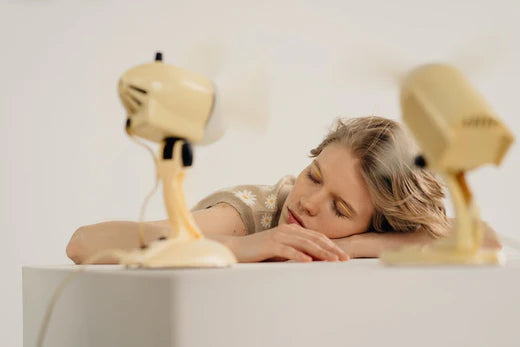
Cooling Comfort: Enhance Your Comfort with CPAP Therapy on Those Hot Nights
Share
Continuous Positive Airway Pressure (CPAP) therapy is a highly effective treatment for obstructive sleep apnea (OSA), but for many users, the discomfort associated with wearing a CPAP mask can be exacerbated during these hot nights. Sweating, skin irritation, stuffy, and a general feeling of warmth can make it challenging for patients to adhere to their CPAP therapy. In this blog, we'll explore various strategies to help individuals enhance their comfort and improve the overall experience of using CPAP during warm nights.
Choose the Right CPAP Mask
Selecting the best CPAP mask is crucial for comfort, especially in warmer weather. Full-face masks cover both the nose and mouth, and while they provide a secure seal, they can contribute to a feeling of heat. Consider trying an AirTouch option. The memory foam of an AirTouch cushion can help decrease sweating and prevent the mask from sliding on your face. AirTouch cushions are not available on all mask options so it's worth talking to your CPAP therapist about your options. Nasal masks or nasal pillows cover less of the face and may provide better ventilation, reducing the sensation of warmth but aren't always appropriate for your therapy. This is why talking to your CPAP Therapist is recommended.
Optimize Room Temperature
Maintaining a cool and comfortable sleeping environment can significantly impact patient comfort during CPAP therapy. Keep the bedroom well-ventilated and use fans or air conditioning to regulate the temperature. Sleeping in lightweight, breathable pajamas and using moisture-wicking bedding (bamboo is great) can also help manage body heat.
Use CPAP Humidification Wisely
While CPAP humidifiers are designed to prevent dryness and irritation, too much moisture can contribute to discomfort, especially in warm weather. Adjust the humidity settings on the CPAP machine to find the optimal level for your comfort. Additionally, using a CPAP machine with a heated tube can help control humidity and prevent condensation within the tubing.
Practice Good Hygiene
Maintaining proper hygiene can prevent skin irritation and promote overall comfort. Regularly clean the CPAP mask, tubing, and humidifier to prevent the accumulation of bacteria or allergens. Use mild, fragrance-free soap to clean the mask and ensure that it is completely dry before use. CPAP Wipes are a great grab-and-go to wipe slippery masks if you are short on time.
Explore Cooling Accessories
Several CPAP accessories are designed specifically to address heat-related discomfort. CPAP mask liners made from moisture-wicking materials can help absorb sweat and reduce skin irritation for full face and nasal masks. Additionally, there are cooling gel pillows and blankets available to help you feel cool at night.
Stay Hydrated
Dehydration can make you feel worse in a warm night during CPAP therapy. Remember to drink enough water and hydrating drinks throughout the day, and consider keeping a glass of water by your bedside. Staying hydrated can also help reduce the risk of dry mouth, a common side effect of CPAP therapy.
Experiment with Sleep Positions
Changing sleep positions can alter how air circulates around the CPAP mask, potentially reducing heat buildup. Experiment with different sleeping positions to find the one that allows for optimal comfort and ventilation. Elevating the head slightly may also improve air circulation.
Enhancing patient comfort during CPAP therapy on hot nights requires a combination of thoughtful equipment selection, environmental adjustments, and personal care practices. By implementing these strategies, you may decrease the discomfort associated with CPAP therapy and enjoy a more restful night's sleep. Always consult with healthcare professionals for personalized advice tailored to your specific needs and preferences.
